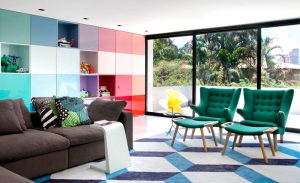You see it a lot in the fashion industry, but it’s also a growing trend among other design-oriented industries such as interior design, that being how trends don’t seem to last as long as they used to. Where we used to anticipate just one ‘in’ trend for the season, we now have a lot of little mini ‘in’ trends for each period and each aspect of each of these seasons.
 In the fashion design industry, we had the winter trends and summer trends which were explicitly defined and in a sense declared a short while before the new season fully sets in, but now seasons such as spring alone have at least two or three mini trends within them. You have those trends which cater to the style and comfort needs of early spring, mid spring and late spring, which perhaps makes sense in that late spring is closer to winter and is therefore colder, while early spring is closer to summer and is therefore warmer.
In the fashion design industry, we had the winter trends and summer trends which were explicitly defined and in a sense declared a short while before the new season fully sets in, but now seasons such as spring alone have at least two or three mini trends within them. You have those trends which cater to the style and comfort needs of early spring, mid spring and late spring, which perhaps makes sense in that late spring is closer to winter and is therefore colder, while early spring is closer to summer and is therefore warmer.
A few years ago this wouldn’t have been viable because we wouldn’t quite have the budgets to match such quick changes of wardrobes, but like a lot of other consumer goods, clothes have become cheaper because they’ve become a little bit more disposable, only really produced to be used that once or twice over that small little pocket of the season they’re targeted for.
That’s how the interior decor industry has become as well — trends come and go so quickly that you’ll find you have the urge to change up your interiors a lot more regularly than you might have done before. Things come into and go out of fashion way too quickly and even though you can definitely still express your own style preferences, it pretty much has to be done within the trend you’re following. There’s an old-looking fitted kitchen design and there’s a classic one, if you know what I mean. Old would not be good while classic would be fine, although if you don’t update the styling regularly, classic can turn into old-looking and outdated very quickly — within one year in fact.
Fortunately though, as is the case with the clothing fashion industry, interior decor items such as paint, furniture and ornaments appear to be cheaper and this is because they’re meant for use in more of a disposable fashion. It’s perhaps less so for furniture and maybe for an interior space such as a fitted bedroom, because with these you maybe buy according to your plans to keep them around for years to come, or perhaps even for a lifetime.
Otherwise the general fickleness which seems to be doing the rounds these days has firmly grabbed hold of the interior design scene. There is a way around all of that however, if you don’t want to re-do your interiors once or twice each year. You’ll have to be willing to spend a little bit more than what the average prices suggested by the market are, decorating your interiors according to strong themes which are immune to the times. A Tuscan theme is a good example, among many, many others.
